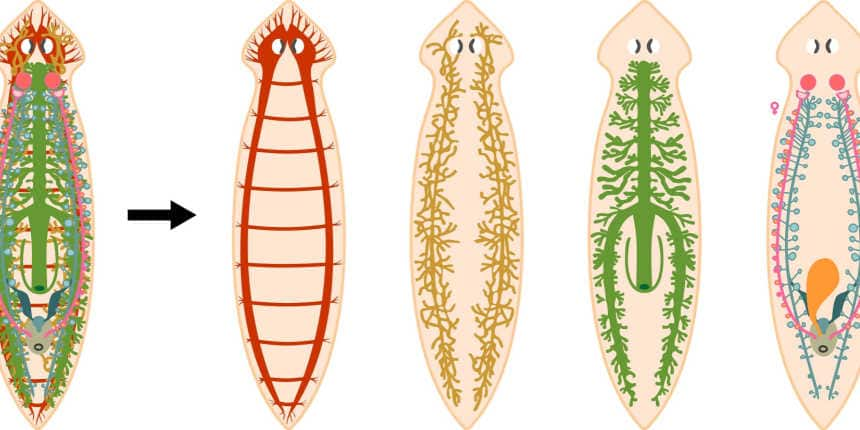How Many Types of Nephridia Are There?
Nephridia is the excretory organ found in the primitive group of animals. Although seen in a wide range of organisms, there are fundamental differences in nephridia that lead to a classification. The first division is into two types.
This Story also Contains
- Protonephridia
- Metanephridium
- Septal Nephridia
- Integumentary Nephridia
- Pharyngeal Nephridia
- Function of Nephridia
- Examples

Protonephridia
Metanephridia
Protonephridia
In protonephridium, the organism's body is connected to a cell with an external opening. Sometimes this cell shows the presence of cilia or flagellum; in such cases, the cell is called a "flame bulb" or "flame cell." If the cilia are absent, then the cell is called a solenocyte.
Metanephridium
Here, the cilia do not open or are connected with any flame cell, but they directly open to the body. Here, the whole body tries to reabsorb the nutrients as they pass through. Depending on the location of the nephridia, usually in the earthworm, they can be again divided into
Septal nephridia
Integumentary nephridia
Pharyngeal nephridia
Septal Nephridia
The septal nephridia is made up of the nephrostome, neck, nephridium body, and terminal duct. The nephrostome is a ciliated funnel connected to the neck of the urinary tract. The neck is a junction between the nephrostome and the body of the nephridium. The body of the nephridium has loops made up of connective tissues. At the end is a terminal duct.
Integumentary Nephridia
This nephridium does not have a nephrostome or coelom opening. Therefore, these are usually known as closed nephridia. Here each nephridium connects to the outside through a nephridiopore on the skin's surface. These nephridia are also known as exonephric nephridia, as the body's wastes move directly into the external environment.
Pharyngeal Nephridia
This nephridium is present in three pairs. These also contain blood glands. Ciliated canals are present. These openings are connected to the buccal cavity and the pharynx region.
Function of Nephridia
The main function of nephridia is to excrete waste materials. The excreta of the organism, consisting mainly of urea, water, ammonia, creatinine, and a few other substances, can be removed from the body through this organ. This is similar to the functioning of kidneys in higher organisms. This organ is also important for maintaining osmoregulation.
Examples
Protonephridia is present in Platyhelminthes, such as flatworms and tapeworms.
Metanephridia is present in Annelida, such as earthworms.
Applications for Admissions are open.
As per latest syllabus. Physics formulas, equations, & laws of class 11 & 12th chapters
JEE Main Important Chemistry formulas
Get nowAs per latest syllabus. Chemistry formulas, equations, & laws of class 11 & 12th chapters
JEE Main high scoring chapters and topics
Get nowAs per latest 2024 syllabus. Study 40% syllabus and score upto 100% marks in JEE
JEE Main Important Mathematics Formulas
Get nowAs per latest syllabus. Maths formulas, equations, & theorems of class 11 & 12th chapters